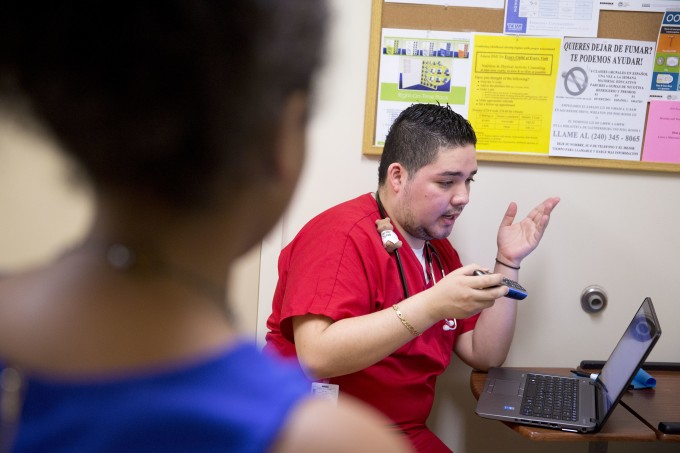Addressing disparities in access to health information is a challenge given the diverse sources of information and users’ trust in and preference for one source over another.
Not an issue to be taken lightly, an individual’s ability to access credible health information directly impacts decision-making and health outcomes. Therefore, patient engagement is an important subject to explore.
Patient engagement is defined by the Center for Advancing Health as “actions individuals must take to obtain the greatest benefit from the health care services available to them.” Certainly, such engagement is essential when it comes to one of the most important patient actions of all: taking medications. After all, as a Yoruba proverb says: “Medicine left in the bottle can’t help.”

Bloomberg file photo
The problem: Patients don’t seem to be fully engaged when it comes to taking medications. In fact, medication is not taken as prescribed 50 percent of the time. This non-adherence leads to 10 percent of all hospitalizations and 26 percent of all preventable readmissions.
Complications from noncompliance with provider recommendations on medications also are responsible for 125,000 deaths per year in the United States. In addition to these healthcare consequences, the lack of patient engagement costs the U.S. health system as much as $ 300 billion per year.
Health information is distributed from a wide variety of sources including healthcare providers, broadcast media, print media, the Internet, and family and friends. All consumers are passive receivers of health information until they become actively engaged and seek information relevant to their particular concern. Preferences for sources of health information are generally associated with age, education level, insurance, race/ethnicity and socioeconomic status. For example, older consumers are more likely to use print media as a source of health information, while the uninsured are less likely to have access to healthcare providers.
Traditional outreach efforts using broadcast and print media have been used in an effort to reach a wide audience, but they are reaching a diminishingly smaller number of passive consumers as user preferences move away from these traditional outlets.
In contrast, the Internet is a growing, active distribution platform for health information, particularly on mobile devices. According to a recent survey by the Pew Research Center, 95 percent of Americans own a cell phone, with 77 percent being smartphones. Additionally, 20 percent use smartphones as their only access point to the Internet.
While users who access the Internet for healthcare information tend to be younger and more educated, patients without access to healthcare providers are also more likely to turn to the Internet as their primary source of health information. However, although the Internet provides a ubiquitous channel for health information, disparities in access to health information are present for patients with low health literacy, ethnicity, and limited English-proficiency as these are major barriers to internet use.
One of the biggest challenges of using the Internet as a source for health information is sifting out non-credible information–an important aspect of health literacy. For example, click-bait scams advertising quick, cheap alternatives can be enticing to many individuals. Health literacy is a personal skill that includes the ability to gather, understand and then act on appropriate health information.
Patients with low health literacy have difficulty with one or more of these steps. All steps are important because an inability in any step detrimentally affects subsequent steps. Health literacy is such an important skill that it is a stronger predictor of health than age, income, employment status and race.
As a trusted source of health information, providers should consider offering handouts to vulnerable populations, and these handouts should be written clearly, in a culturally appropriate way and in the patient’s preferred language. In addition, links to other resources (e.g. videos) available in their languages should be accessible on the healthcare system’s patient portal.
The willingness of healthcare providers to answer questions, their ability to appreciate their patients’ preferred sources of health information, and an effort to guide patients to navigate the Internet to useful sources of information can reduce these disparities to accessing credible health information.
Healthcare providers are a trusted primary source of health information for many patients. It is important that information presented to patients incorporate health literacy approaches that are culturally appropriate. One way to accomplish this is by providing easily accessible links in patient portals to credible health information as consumers are increasingly encouraged to use these portals.
Understanding barriers to access, preferred routes, and trends can provide healthcare providers and policymakers with the tools to improve effective communication by increasing focus on populations with low access to healthcare information.
The ultimate goal is to meet patients where they are with information that will make it more likely that they twist the cap, take the medications out of the bottle, and use it as instructed – thereby improving their health and well-being.

